 Doctor urologist
Doctor urologist
Medical experience – 22 years
The doctor participates in conferences and symposia for advanced training, is fluent in modern conservative and minimally invasive surgical methods for the treatment of urological diseases.
Treatment of diseases:
- urolithiasis disease;
- acute and chronic inflammatory diseases of the genitourinary system: cystitis, prostatitis, pyelonephritis;
- neoplasms of the urinary and male reproductive systems: prostatic hyperplasia, hydrocele of the testicle;
- infertility in men, erectile dysfunction, premature ejaculation and so on;
- varicocele, urinary incontinence in women and men, phimosis.
Procedures performed:
- urethroscopy;
- cystoscopy;
- pyeloscopy;
- puncture biopsy of the testes, prostate;
- transurethral resection of the ureterocele, tumors of the bladder, prostate;
- contact laser lithotripsy of bladder, ureter, kidney stones;
- Circular excision of the foreskin – circumcision;
- varicocelectomy;
- operations with dropsy testicle;
- excision of oleogranulomas;
- cystostomy;
- single-stage prostatectomy;
- ureterolithotomy;
- pyelolithotomy;
- nephrostomy puncture, open;
- nephrectomy, etc.

Consultation specialist with a full range of surveys:
- sigmoidoscopy,
- colonoscopy
- ultrasound of the genitourinary system
- X-ray and laboratory diagnostics.
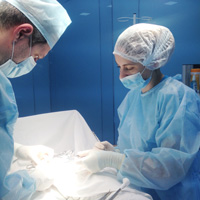
Premature Ejaculation
Microsurgical denervation of the penis. There are various modifications of this operation. The meaning of the operation is the intersection and reverse connection of the nerve trunks, conducting impulses from the receptors of the penis to the center of ejaculation of the CNS.
It reduces the sensitivity of the penis and significantly lengthen the time before the onset of ejaculation.
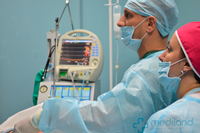
Transurethral resection of the prostate gland hyperplasia
It is the "Gold Standard" for surgical treatment of prostatic hyperplasia and is performed through the urethra using endoscopic equipment.
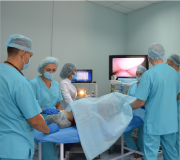
Trans-vesicular or retinal prostatectomy
These techniques are used for large prostatic hyperplasia, as well as the presence of calculi in the bladder.
These surgeries are more traumatic - removal of adenomatous nodes is performed through an incision of the anterior abdominal wall, bladder, at the end of the operation, drainage into the bladder and urethra is established.
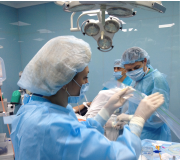
Endoscopic method (laparoscopic) treatment of varicocele
The testicular vein in the internal inguinal ring, from the side of the abdominal cavity, is intersected and ligated using endoscopic equipment. Instruments are carried out through three incisions up to 1 cm on the anterior abdominal wall.

Ivanissevich Operation
Access in the left iliac region, through the skin, aponeurosis, muscles, in the preperitoneal space, isolate, cross, and ligate the testicular vein.

Microsurgical method (Marmara)
Access to the left inguinal region, after dissection of the skin, secrete a spermatic cord, in which the expanded veins are crossed and tied up.
Microsurgery is one of the most effective treatments, as injuries and relapse rates are minimal.

Winkelmann operation
Produce the incision of the testicle is dissected to the parietal leaf of the vaginal membrane, the fluid is removed, the parietal leaf is dissected, turned out and sewn behind the testicle.
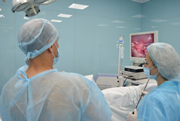
Bergman operation
Produce the incision of the testicle is dissected to the parietal leaf of the vaginal sheath, the fluid is removed, the parietal sheath of the testicle is dissected, and the rest is sewn.

Contact laser lithotripsy
A technique in which calculi are destroyed by a holmium laser. Stones can be located in the kidneys, ureters, bladder, access to them by using an endoscopic instrument - the ureterornoroscope.

Laparoscopic lithotomy
With this technique, stones are removed using endoscopic equipment, through several (3-4) small incisions (less than 1 cm) on the anterior abdominal wall, through which laparoscopic instruments are inserted

Pyelolithotomy, ureterolithotomy
Removal of stones located in the ureter or kidney through an incision in the anterior abdominal wall or in the lumbar region, depending on location.
The indications for this treatment are ureteral strictures, large calculus sizes, repeated operations, developmental abnormalities, purulent complications, etc.








